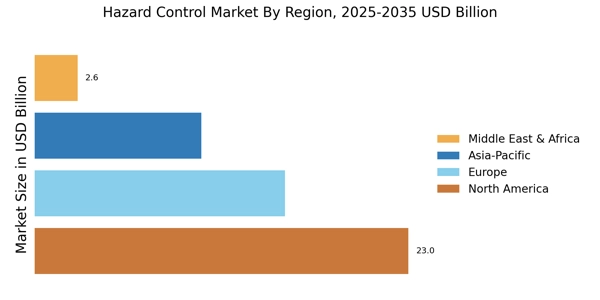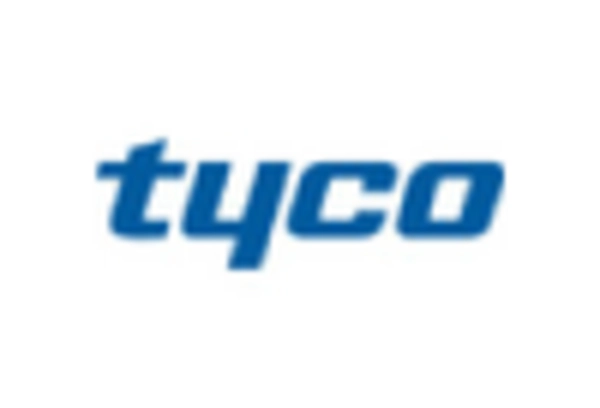Regulatory Frameworks and Compliance
The establishment of stringent regulatory frameworks is a key driver in the Hazard Control Market. Governments and regulatory bodies are enforcing laws that mandate safety measures in various sectors, including construction, manufacturing, and healthcare. Compliance with these regulations is not only a legal obligation but also a moral imperative for organizations. The market for hazard control solutions is expected to grow as companies invest in compliance-related technologies and services. For example, the implementation of OSHA regulations in the United States has led to increased demand for hazard control systems, indicating that regulatory compliance is a significant factor influencing the Hazard Control Market.
Rising Awareness of Workplace Safety
There is a growing awareness regarding workplace safety, which is significantly influencing the Hazard Control Market. Organizations are recognizing the importance of implementing effective hazard control measures to protect employees and minimize risks. This heightened awareness is reflected in the increasing investments in safety training programs and hazard control technologies. According to recent data, companies that prioritize safety see a 30% reduction in workplace incidents. This trend suggests that as more businesses adopt comprehensive safety strategies, the demand for hazard control solutions will continue to rise, further propelling the Hazard Control Market.
Technological Integration in Hazard Control
The integration of advanced technologies in the Hazard Control Market is driving significant growth. Innovations such as artificial intelligence, machine learning, and the Internet of Things are enhancing hazard detection and response capabilities. For instance, AI algorithms can analyze vast amounts of data to predict potential hazards, thereby improving safety protocols. The market for hazard control technologies is projected to reach USD 20 billion by 2026, indicating a robust demand for sophisticated solutions. This technological evolution not only streamlines operations but also reduces the likelihood of accidents, making workplaces safer. As organizations increasingly adopt these technologies, the Hazard Control Market is likely to witness accelerated growth.
Increased Investment in Safety Infrastructure
Investment in safety infrastructure is becoming a priority for many organizations, thereby driving the Hazard Control Market. Companies are allocating substantial budgets to enhance their safety measures, including the installation of advanced hazard control systems. This trend is particularly evident in industries with high-risk environments, where the cost of accidents can be substantial. Recent statistics indicate that businesses investing in safety infrastructure can achieve a return on investment of up to 400%. As organizations recognize the financial and ethical implications of safety, the demand for innovative hazard control solutions is likely to increase, further stimulating the Hazard Control Market.
Focus on Sustainability and Environmental Safety
The emphasis on sustainability and environmental safety is emerging as a crucial driver in the Hazard Control Market. Organizations are increasingly adopting practices that not only ensure workplace safety but also minimize environmental impact. This shift is prompting the development of eco-friendly hazard control solutions that comply with environmental regulations. The market for sustainable hazard control technologies is projected to grow significantly, as companies seek to align their operations with global sustainability goals. This trend indicates that the Hazard Control Market is evolving to meet the dual demands of safety and environmental responsibility, potentially leading to innovative solutions that address both concerns.


















Leave a Comment